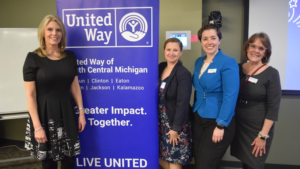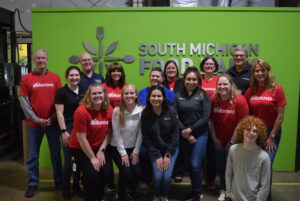
“In the United States, the average Black and Hispanic or Latino households earn about half as much as the average White household and own only about 15 to 20 percent as much net wealth.”
– the United States Federal Reserve
With income above the Federal Poverty Level but below a basic survival threshold — defined as the ALICE Threshold — ALICE households earn too much to qualify as “poor” but are still unable to make ends meet. They often work as cashiers, nursing assistants, office clerks, servers, laborers, and security guards. These types of jobs are vital to keeping Michigan’s economy running smoothly, but they do not provide adequate wages to cover the basics of housing, childcare, food, transportation, health care, and technology for these ALICE workers and their families.
According to 2021 ALICE Report data for the United Way of South Central Michigan region:
- Calhoun County: has 53,827 households and 39% of them are living below the ALICE threshold.
- Clinton County: has 30,070 households and 30% of them are living below the ALICE threshold.
- Eaton County: has 44,420 households and 29% of them are living below the ALICE threshold.
- Ingham County: has 114,534 households and 42% of them are living below the ALICE threshold.
- Jackson County: has 61,403 households and 41% of them are living below the ALICE threshold.
- Kalamazoo County: has 103,196 households and 39% of them are living below the ALICE threshold.
Data also show that the Black and Hispanic communities are disproportionately represented in ALICE and below-poverty households statewide when compared to their White neighbors.
Where a person lives or where children are raised can have a strong influence on opportunities to succeed. When these factors are combined with race and discriminatory systems, people of color, are disproportionately impacted. Over the next few days, we will explore how ALICE, race and other factors impact a person’s housing, health, education, financial stability, and more.
Today’s Challenge
Read
- Explore the full 2021 United for ALICE report. (2+ mins) https://www.unitedforalice.org/state-reports
- Read about Raj Chetty, a Harvard economist committed to showing how zip code shapes opportunity (6 minutes) https://www.theatlantic.com/magazine/archive/2019/08/raj-chettys-american-dream/592804/
Engage
- Dive into our local Michigan data with The Opportunity Insights Economic Tracker, a visionary tool to help you understand social capital and economic mobility. (2+ mins) https://opportunityinsights.org/










